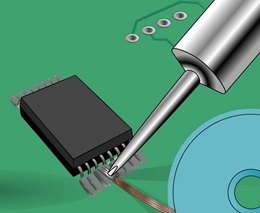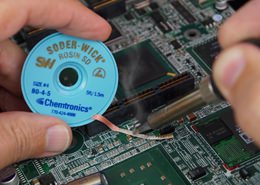
Your Sample Request
Soder-Wick Rosin Flux Desoldering Wick
*=required field
TDS
REGS
SDS
Soder-Wick Rosin Flux Desoldering Wick
Soder-Wick Rosin has the fastest wicking action, but rosin flux leaves behind residues that should be removed with a flux remover. Flux-Off Rosin flux remover is an ideal choice for your cleaning process.
Soder-Wick brand desoldering wick offers the state of the art in desoldering technology. Soder-Wick is designed for today’s heat sensitive electronic components using lighter mass, pure copper braid construction that allows for better thermal conductivity, even at low temperatures. Soder-Wick responds faster than conventional desoldering braids thereby minimizing overheating and preventing PCB damage.
Each 25' or longer spool is individually packaged in a sealed bag. 5' and 10' bobbins have 2 packaging options:
 |
 |
| 25 bobbins in resealable bag | 10 bobbins in resealable pouch |
Features & Benefits
- Noncorrosive ultra high purity Type R rosin flux
- Minimizes the risk of heat damage to the board
- Will not leave ionic contamination on the boards
Specifications:
- MIL-F-14256 F type R flux
- NASA-STD-8739.3 Soldered Electrical Connections
- DOD-STD-883E, Method 2022
- ANSI/IPC J STD-004, Type ROL0








